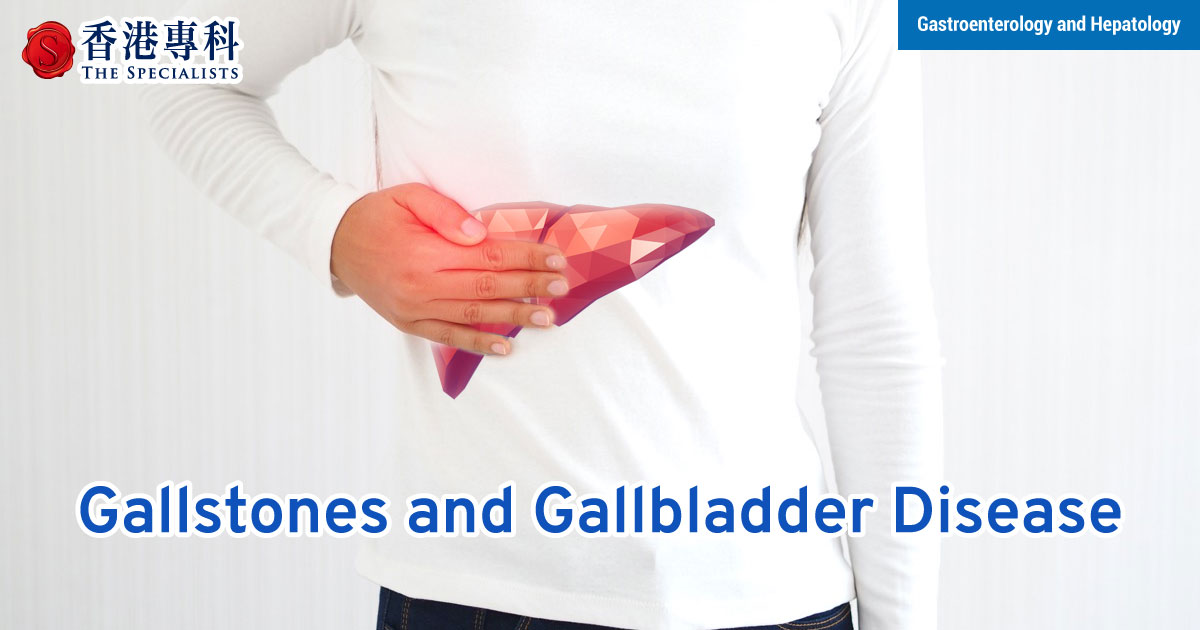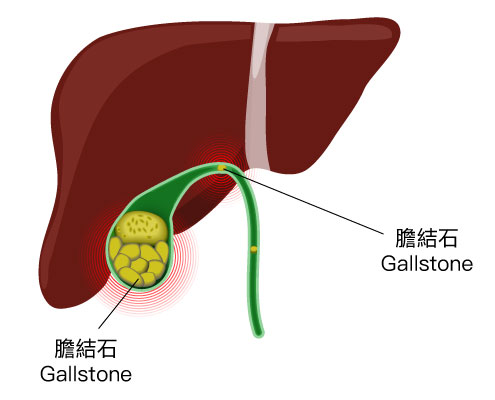Gallstones and Gallbladder Disease

Gallbladder
The pear-shaped gallbladder lies beneath the liver. It stores a green liquid called bile, which is produced by the liver to help the body digest fats and other substances. When we eat, bile is released from the gallbladder into the intestines.
Gallbladder diseases
Cholecystitis is inflammation of the gallbladder. Symptoms include right upper abdominal pain, nausea, vomiting, and occasionally fever. More than 90% of the time acute cholecystitis is from blockage of the cystic duct by a gallstone.
Gallstones are solid lumps or "stones" which form in the gallbladder or bile duct. They are formed when some of the chemicals stored in the gallbladder harden. Some patients get just one large stone, others may have many tiny ones. When the stones begin to obstruct the bile system, problems such as infection and inflammation will begin.

Gallstones in middle-aged adults
People who conform to a profile of 'fat, fertile, female, and forty' are likely to have gallstones. While the exact causes of gallstones are unknown, gallstones are thought to develop because the levels of cholesterol in bile become too high.
Could the abdominal pain actually be gallstones?
Symptoms of gallbladder diseases include indigestion, nausea, heartburn, right upper abdominal pain and jaundice (if biliary tract is obstructed by stone). You should seek immediate medical consultation if you have symptoms including yellowing of the skin or the whites of the eyes, fever, dark urine and pale clay-coloured stools.
Diagnosis
- Ultrasound can detect the location of any stones.
- An abdominal x-ray can be used to identify calcified gallstones as gallstones might be calcified.
- CT scans and MRI scans can show gallstones in the ducts of the biliary tract.
- Blood and/or urine tests are used to check for signs of infection and inflammation.
Extracorporeal Shock Wave Lithotripsy (ESWL) & Stone dissolution
One approach is called extracorporeal shock wave lithotripsy (ESWL), by using shock waves to break up the stones into tiny pieces that can then pass easily out of the system. However, attacks of intense colic pain are common after ESWL and the success rate is not high. Another approach is to use medicines to dissolve the stones, but this treatment is not suitable for everyone and may take a very long time.
Surgical treatment
Options for surgery are either by laparoscopic approach or conventional open cholecystectomy. Laparoscopic Cholecystectomy (LC) is the most common treatment. After a general anaesthetic, a number of tiny cuts, are made in the abdomen. The gallbladder is removed without cutting through any abdominal muscles. It is considered more beneficial for patient in decreasing postoperative pain and the need for postoperative analgesia, shortens the hospitalization period. LC also improves a cosmetic effect and improved patient satisfaction in progress of recovery. Sometimes, LC is not possible and an "open" cholecystectomy is necessary. This involves the removal of the gall bladder under general anaesthetic through a cut in the abdomen.
How the body functions after gall bladder removal?
You can live normally without the gallbladder. Many people will not notice changes to their digestion or other effects of gallbladder removal. For a full recovery, you may choose low-fat foods and avoid fatty meat or fried foods.
*The above information is for reference only, please consult your doctor for detail.

 3405 8288
3405 8288
